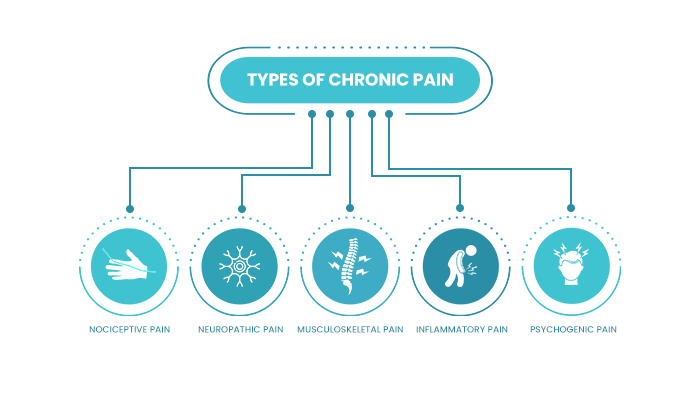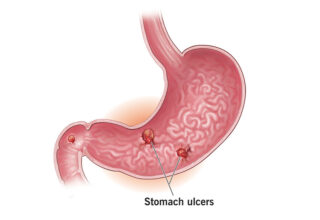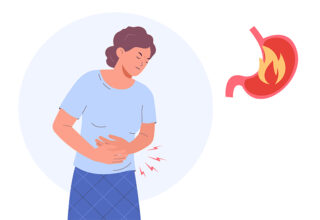Chronic pain is an exhausting condition which affects millions of people worldwide. It can make performing your daily activities a challenge. It affects your quality of life by disrupting your physical as well as emotional well-being.
In this blog we are going to explore the causes, symptoms, different types, and some management techniques for chronic pain. This will help you have a better understanding of this condition, and manage it appropriately.
What is Chronic Pain?
It is a type of pain that lasts over a long period of time, often more than 3 to 6 months.
According to the NHS , any pain continuing for more than 3 months, either as part of another health condition or despite treatment is known as chronic pain.
Generally it is a persistent and recurring pain that interferes with your daily life and makes it difficult to go to work, sleep or engage in daily activities.
Causes of Chronic Pain:
The exact cause of chronic pain is not clear. The underlying causes can be complex and multifaceted. It can be caused by:
Injuries or Traumas:
Even after an injury or trauma heals, pain can continue due to nerve damage or scar tissue formation. This can irritate nearby areas and send ongoing pain signals, turning short term pain into long term pain.
Medical Conditions:
Sometimes this pain can be caused due to some underlying medical conditions like;
- Arthritis
- Fibromyalgia
- Migraines
- Neuropathies
- Diabetes
- Shingles
- Sciatica
Surgical Procedures:
Usually post-surgical pain subsides as the body heals. In some cases, the pain persists beyond the expected recovery period. When acute pain lingers, it can change into chronic pain, especially if nerve damage occurs during the surgery or if the healing is compromised.
Psychosocial Factors:
Mental health plays an important role in how we perceive and manage pain. Stress, anxiety and depression can not only make the pain worse but can also make it last longer. The mind and body are deeply interconnected. Emotional distress can intensify physical pain, while chronic pain can, in turn, worsen psychological well-being.
Central Sensitisation:
If the central nervous system becomes hypersensitive, it amplifies the pain signals, lowers pain threshold, and causes abnormalities in normal pain pathways, leading to development of long term pain.
Lifestyle Factors:
Everyday habits and lifestyle choices can greatly affect chronic pain. Being overweight, poor posture, and prolonged sitting can strain joints and muscles. Lack of activity can cause muscle weakness. Repetitive physical strain can also cause small injuries that lead to chronic pain. Together, these factors can worsen the pain and slow down the healing.
Symptoms of Chronic pain:
Its symptoms can vary widely from person to person. Generally it is a continuous or intermittent pain lasting for months. This pain can be dull, sharp, stabbing, burning or throbbing in nature.
It can be associated with other symptoms and conditions as well, like:
- Muscle stiffness
- Muscle Fatigue
- Anxiety
- Depression
- Sleep Disturbances
- Appetite Changes
Types of Chronic pain:
Chronic pain is a complex condition having different types, each with its own characteristics, symptoms and treatment strategies. People can also experience its different types simultaneously.
Here are the main types of chronic pain:

1. Nociceptive Pain:
It is the most common type of pain and is caused by damage to body tissue. It is caused by activation of nociceptors, sensory nerve endings that detect harmful stimuli like physical injury, burn, or contusions.
This can be an aching, throbbing or sharp pain localised to the injury, along with redness, swelling and tenderness.
It can be somatic pain that originates from skin, muscles, bones or connective tissue, or visceral pain that arises from internal organs like menstrual cramps and gallbladder pain.
Treatment options for nociceptive pain may include; rest, cold therapy, physical therapy, and medications like non steroidal anti-inflammatory drugs (NSAIDs) or opioids.
Common causes of nociceptive pain include:
- Injuries like cut, bruises, fractures or burns
- Mechanical stress like from poor posture
- Inflammation like arthritis and tendonitis
- Surgical incisions and procedures
2. Neuropathic Pain:
This type of pain arises from damage or dysfunction of the nervous system. It is characterised as a sharp, burning or stabbing pain, or feelings of numbness or tingling, often described as “pins and needles” . It can be difficult to manage as it normally does not respond well to painkillers.
Its effective management requires proper diagnosis and a personalised treatment plan. Some treatment options include physical therapies, medications and nerve blocks.
Here are some common conditions that can cause neuropathic pain:
- Diabetic Neuropathy:
Diabetic neuropathy is one of the most common causes of neuropathic pain. Diabetes is a condition which causes increased blood sugar levels. Prolonged increase of sugar levels in blood causes damage to the nerves throughout the body. This damage causes sensations of tingling, numbness, burning or stabbing pain.
- Postherpetic Neuralgia:
Postherpetic neuralgia occurs as a complication of Shingles, a viral infection caused by the reactivation of the Varicella-zoster virus (the same virus that causes chickenpox). Even after the shingles rash resolves, nerve damage can lead to persistent and often severe pain in the affected area, which can last for months or even years.
- Sciatica:
Sciatica is characterised by pain that radiates along the path of the sciatic nerve. It usually extends from the lower back through the hips and down each leg. It is typically caused by compression or irritation of the nerve due to herniated discs, spinal stenosis, or other spinal conditions. The pain can range from a mild ache to sharp, burning pain.
- Injuries:
Direct trauma or injury to the nerves, such as those from accidents, surgeries, and repetitive stress, can lead to long lasting neuropathic pain. The damaged nerves may send incorrect signals to the brain, creating pain sensations.
Neuropathic pain can also be broadly classified into two groups, based on the origin of nerve damage.
- Peripheral Neuropathic Pain:
It is caused by damage to the peripheral nervous system. For example pain caused by diabetic neuropathy and postherpetic neuralgia.
- Central Neuropathic Pain:
It is caused by damage to the central nervous system. For example after cerebrovascular accidental.
3. Musculoskeletal Pain:
This type of pain arises from bones, muscles, joints or connective tissues. This pain can range from mild discomfort to severe debilitating pain.
Commonly this pain is caused by some injury, trauma or physical strain, or underlying medical condition.
Its symptoms include deep aching pain localized to joints and muscles, muscle stiffness, spasm, or cramping.
Treatment options for this type of pain includes physiotherapy, lifestyle changes, and medicines like anti-inflammatory drugs, muscle relaxants etc.
Some common causes of musculoskeletal pain are:
- Arthritis:
It is the chronic inflammation of joints, which causes swelling, stiffness and pain in joints.
- Fibromyalgia:
It is a generalised or widespread musculoskeletal pain that causes muscle fatigue and cognitive difficulties.
- Back Pain:
Chronic back pain can be caused due to poor posture, disc herniation, degenerative changes in spine or spinal abnormalities.
4. Inflammatory Pain:
This pain occurs due to injury, infection, or chronic diseases, which trigger the immune system. Although inflammation is a natural reaction of our body, chronic inflammation can cause chronic pain and tissue damage.
It is characterised by swelling, warmth, redness, and discomfort in the affected area.
Treatment for this type of pain may include anti-inflammatory drugs, physical therapy and lifestyle modifications.
Common causes for inflammatory pain are:
- Auto-immune Diseases:
Auto-immune diseases like rheumatoid arthritis, gout, lupus, and inflammatory bowel disease, can cause inflammatory pain in different areas of the body along with other symptoms.
- Infections:
Inflammation caused by bacterial, viral or fungal infection can cause localised or generalised pain.
5. Psychogenic Pain:
It is the type of pain that is caused by psychological factors like stress, anxiety, depression or post trauma. Despite the presence of any physical cause, this pain can be experienced by an individual and affect the quality of their life.
It can be persistent or intermittent and vary in intensity. It can occur anywhere in the body, commonly in the back, head or stomach.
Since this pain lacks a clear physiological cause, it requires a comprehensive evaluation along with ruling out other medical conditions.
Treatment options may include medicines like antidepressants and anxiolytics, therapies like stress reducing therapies, and psychotherapy.
Common psychological triggers for this pain include:
- Chronic stress
- Depression
- Anxiety
- Post traumatic stress disorder
Conditions Associated with Chronic Pain:
It can be associated with other conditions or diseases like:
- Migraine
- Arthritis
- Fibromyalgia
- Neuropathies
- Chronic back pain
Chronic Pain Management:
Here are some chronic pain management techniques and tips for you:
- Do gentle exercise like walking, cycling, and swimming.
- Try physical therapies like stretching, heat and cold compressions.
- Practice Mind-Body Techniques like Yoga, Tai Chi, and Cognitive behavioural therapy.
- Take adequate and quality sleep.
- Share your experience with others.
- Seek support from family & friends.
- Take Over The Counter Painkillers like paracetamol.
- Try therapies to relax yourself like massage & aromatherapy.
- Use herbal remedies like ginger and turmeric.
Learn more in detail about these chronic pain management techniques.
Remember, to consult your healthcare provider if your pain is not getting better. So they can find the cause of your pain and treat it accordingly.
If you are struggling with chronic pain and need some time off work or school to take rest and recover, then you might need a sick note to officially communicate your absence. You can get a sick note online within minutes from an EU licensed doctor from the comfort of your home.








